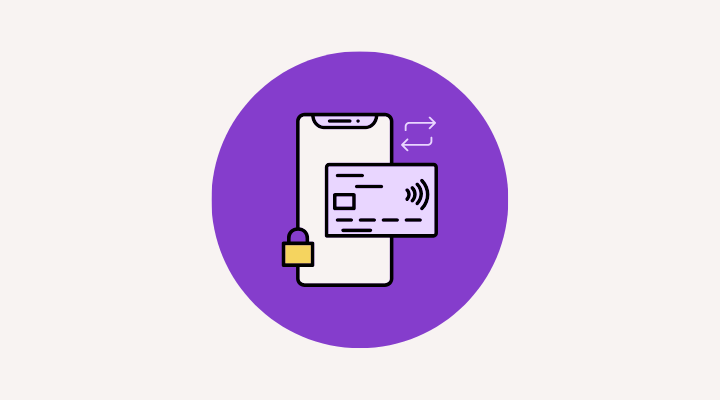In today’s digital world, customers expect instant, clear, and reliable updates—especially after a purchase or any other important action. This is exactly where transactional messaging comes in. Whether it’s an order confirmation, shipping update, or password reset, transactional messages are crucial for the customer experience and for building brand trust.
In this article, we explore what transactional messaging is, why it matters, how it works across channels like email, SMS, Viber, and WhatsApp, and what best practices you should follow to make the most of it.
At a glance:
-
What is transactional messaging
-
What are the key benefits of transactional messaging
-
Transactional Email
-
Transactional SMS
-
Transactional Viber
-
Transactional WhatsApp
-
Best Practices and Examples
What is Transactional Messaging?
Transactional messages are automated messages triggered by a customer's action. They are non-promotional, purely informational, and serve a specific purpose.
Examples include:
-
Order confirmations
-
Shipping updates
-
Verification codes (OTP)
-
Password resets
-
Appointment reminders
-
Sending documents like receipts or invoices
These messages are expected, almost always opened, and often prompt immediate action from the user.
Why Transactional Messaging Matters
-
Builds trust and transparency: Customers want to know what’s happening with their order or account.
-
Improves user experience: Instant updates reduce anxiety and the need for contacting support.
-
Encourages engagement: While not promotional, these messages can guide users toward next steps, such as completing a survey.
-
Boosts customer retention: A smooth post-purchase experience increases repeat purchases and long-term loyalty.
Choosing the Right Channel: Email, SMS, Viber, or WhatsApp
1. Email – For detailed messages
Email remains one of the most reliable transactional messaging channels. From text to design and color palette, messages can be fully customized to match your brand identity and present a professional image. It allows for attachments, links, and detailed content—ideal for receipts, invoices, or comprehensive updates. Plus, it remains accessible in the user’s inbox for future reference.
Downside: It’s not the best for urgent updates. Users may miss the message, or it could end up in the spam folder. For time-sensitive notifications, other channels may be more effective.
2. SMS – For urgent, instant alerts
SMS excels at transactional messaging thanks to its immediacy and high open rate, up to 98%. It doesn’t require internet or an app, making it accessible to nearly everyone. Ideal for short, clear messages like appointment confirmations, verification codes, or order updates, SMS ensures recipients see your message almost instantly.
Limitation: The 160-character limit restricts detail, and the lack of multimedia support limits versatility.
3. Viber – Rich media messaging
Viber is a great choice when you want to deliver transactional updates with visual elements and interactivity. It supports images, emojis, logos, and buttons, offering a richer user experience. The branded sender name also adds to the message’s credibility.
Limitation: Only works if the user has the Viber app. Without an SMS fallback, delivery is not guaranteed to all.
4. WhatsApp – Personal and interactive
WhatsApp is ideal for transactional communication like appointment confirmations, booking updates, and instant support. It supports two-way communication and rich content (images, documents, buttons) and has a massive global user base. Businesses can send clear, interactive messages like instant confirmations or changes via quick reply buttons.
Limitation: Requires prior opt-in from the user and installation of the app. Still, it’s a powerful channel for timely, personalized transactional engagement.
Quick Tips by Channel
Email: Use responsive design and test on all devices
SMS: Use short links & personalize with dynamic fields
Viber: Include images and CTA buttons
WhatsApp: Allow replies for better engagement
Transactional Messaging Examples
For online shopping:
After completing a purchase, the customer instantly receives an SMS:
“Thanks for your order! Receipt #3094. We’ll notify you when it ships.”
When the item ships, they get a message via SMS, Viber, or WhatsApp:
“Your package is on the way! Expected Tuesday. Track it here: [link]”
For subscriptions and sign-ups:
After signing up, users get a welcome email with instructions and FAQs. If suspicious activity is detected, they instantly receive a security alert via SMS or Viber:
“New login to your account. If this wasn’t you, change your password: [link]”
For scheduled appointments:
In services like clinics or salons, WhatsApp is perfect for confirming appointments:
“Hi Maria, your appointment is confirmed for Wednesday at 10:30. Add it to your calendar.”
Best Practices for Effective Transactional Messaging
1. Send instantly: These messages must be real-time. Even a few seconds’ delay can disrupt the customer experience. Automate your triggers for timely delivery.
2. Be clear and concise: Avoid fluff. Explain what happened, what the user should expect next, and if they need to take any action (e.g., click a button or track an order).
3. Use clear branding: Include your brand name and logo (where supported). This boosts trust and recognition
4. Provide value: Transactional messages aren’t ads, but you can still include useful content like:
- A quick reorder button
- Tips for using the product
- A link to customer support
5. Follow the rules: Some channels require prior user consent. Make sure you’re GDPR-compliant and aligned with platform-specific policies for safe, legal communication.
Transactional messaging isn’t just a necessity—it’s a strategic tool for satisfaction, retention, and loyalty.
Choose the right channel (or a combination), apply best practices, and turn every update into a great customer experience.


